Radiator Repair Cost Calculator
Repair Options
Replacement Options
Results
Repair Cost
Replacement Cost
Savings
Estimated Longevity
When your car starts overheating and you see that telltale puddle under the engine, the first thought is usually: radiator replacement. But before you shell out $500 or more, ask yourself: could this be fixed? The answer is yes-often, you can fix a radiator without replacing it. Many leaks, clogs, and minor damages are repairable with the right tools, a little patience, and some basic mechanical know-how.
Common Radiator Problems That Can Be Repaired
Not every radiator issue means it’s time for a new one. Most failures fall into three categories: leaks, clogs, and corrosion. Each has different fixes.
Leaking radiator is the most common problem. You might notice coolant dripping from the tank, seams, or hoses. Tiny pinhole leaks, especially in the plastic end tanks, can often be sealed. Even a cracked side tank can sometimes be patched if the damage is small and not near a stress point.
Clogged radiator doesn’t always mean the fins are blocked by rust. More often, it’s mineral deposits or sludge from old coolant. This reduces cooling efficiency, causes overheating, and makes your engine work harder. A flush can restore flow without touching the radiator itself.
Corroded or loose fittings-like the radiator cap, drain plug, or hose clamps-are easy to replace. A worn cap that doesn’t hold pressure? That’s a $15 fix, not a $600 rebuild.
How to Fix a Small Radiator Leak
Small leaks are the easiest to handle. Here’s how:
- Let the engine cool completely. Never open a hot radiator-steam can burn you.
- Drain the coolant into a container. You’ll need to reuse or dispose of it properly.
- Locate the leak. Use a flashlight and dry the radiator surface. Look for white residue or wet spots. If it’s hard to find, add UV dye to the coolant and use a UV light after running the engine for 10 minutes.
- For metal radiator tubes: Clean the area with sandpaper, then apply a high-temp epoxy like JB Weld. Let it cure for 24 hours.
- For plastic end tanks: Use a radiator sealant like Bar’s Leaks Liquid Copper. Pour it into the coolant reservoir while the engine is running and warm. It flows to the leak and seals it from the inside.
- Refill with a 50/50 mix of coolant and distilled water. Start the engine and check for leaks again after 15 minutes.
These fixes work for leaks under 1/8 inch. If coolant is spraying out or you see a large crack, skip this and head to a pro.
Cleaning a Clogged Radiator
A clogged radiator doesn’t need replacement-it needs a flush. Over time, rust, scale, and debris build up inside the cooling passages. This blocks flow and reduces heat transfer.
Here’s how to flush it yourself:
- Drain the old coolant. Use a drain pan and wear gloves.
- Remove the radiator cap and fill with water and a radiator flush solution (like Gunk Radiator Flush). Follow the bottle’s instructions for amount.
- Run the engine for 15-20 minutes with the heater on high. This circulates the flush through the whole system.
- Turn off the engine and let it cool. Drain the flush solution.
- Rinse with clean distilled water. Fill and drain again to make sure no residue remains.
- Refill with fresh coolant. Use the type specified in your owner’s manual-mixing wrong types can cause sludge.
After the flush, your temperature gauge should stabilize. If it still runs hot, the problem might be the thermostat or water pump-not the radiator.
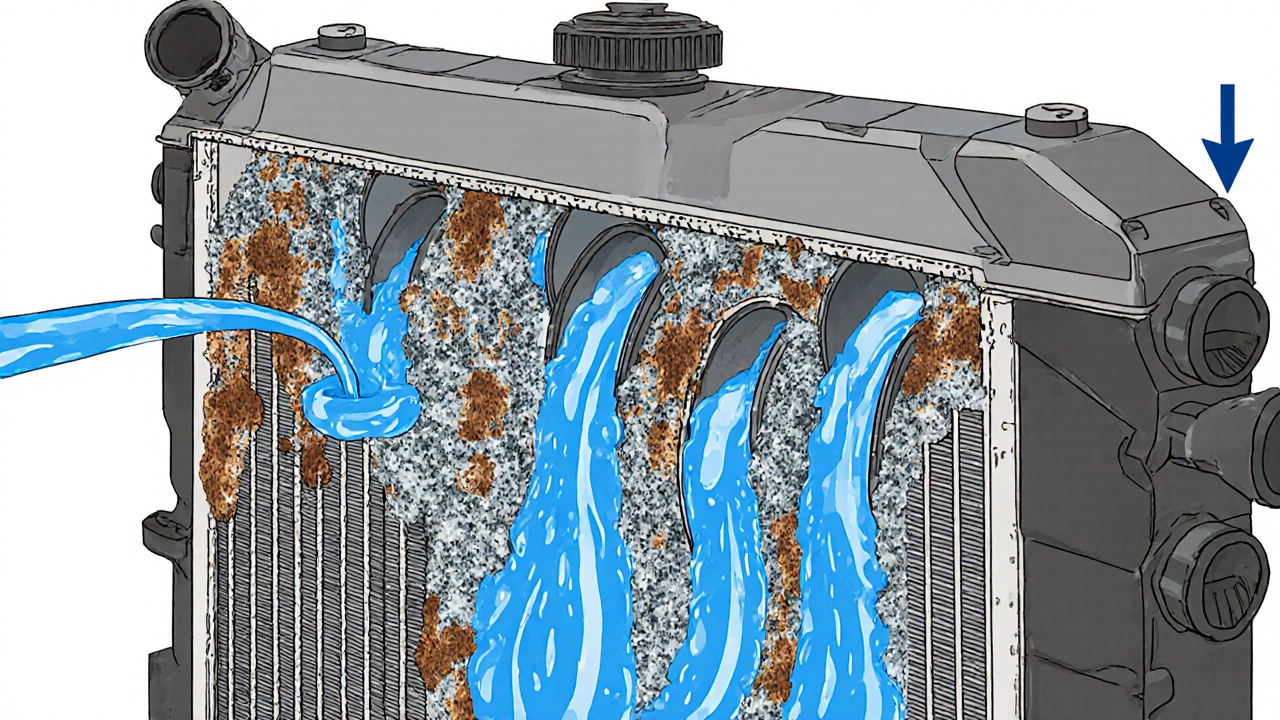
When a Radiator Can’t Be Fixed
Some damage is beyond repair. You should replace the radiator if:
- The core (the metal part with fins) is crushed or bent from an accident.
- There are multiple leaks in different spots-patching one won’t stop the others.
- The radiator is more than 10 years old and shows heavy corrosion inside and out.
- You’ve tried sealants and flushes, and it still overheats after 2-3 weeks.
Older aluminum radiators with plastic end tanks are common failure points. If the plastic is brittle and cracking, it’s not going to hold. Even the best epoxy won’t last under constant heat and pressure.
Cost Comparison: Repair vs. Replace
Here’s what you’re really paying for:
| Option | Cost Range | Time Required | Longevity |
|---|---|---|---|
| Radiator sealant (Bar’s Leaks, BlueDevil) | $15-$30 | 30 minutes | 6-18 months |
| DIY epoxy repair | $10-$25 | 1-2 hours | 1-3 years |
| Professional radiator flush | $80-$150 | 1-2 hours | 2-5 years |
| New OEM radiator | $400-$800 | 2-4 hours | 8-12 years |
| New aftermarket radiator | $200-$450 | 2-4 hours | 5-8 years |
Notice the gap? A $20 sealant can buy you 6 months of trouble-free driving. If you’re planning to keep the car for another year or two, that’s a smart move. If you’re holding onto a 15-year-old car, a $300 aftermarket radiator might be the better long-term play.
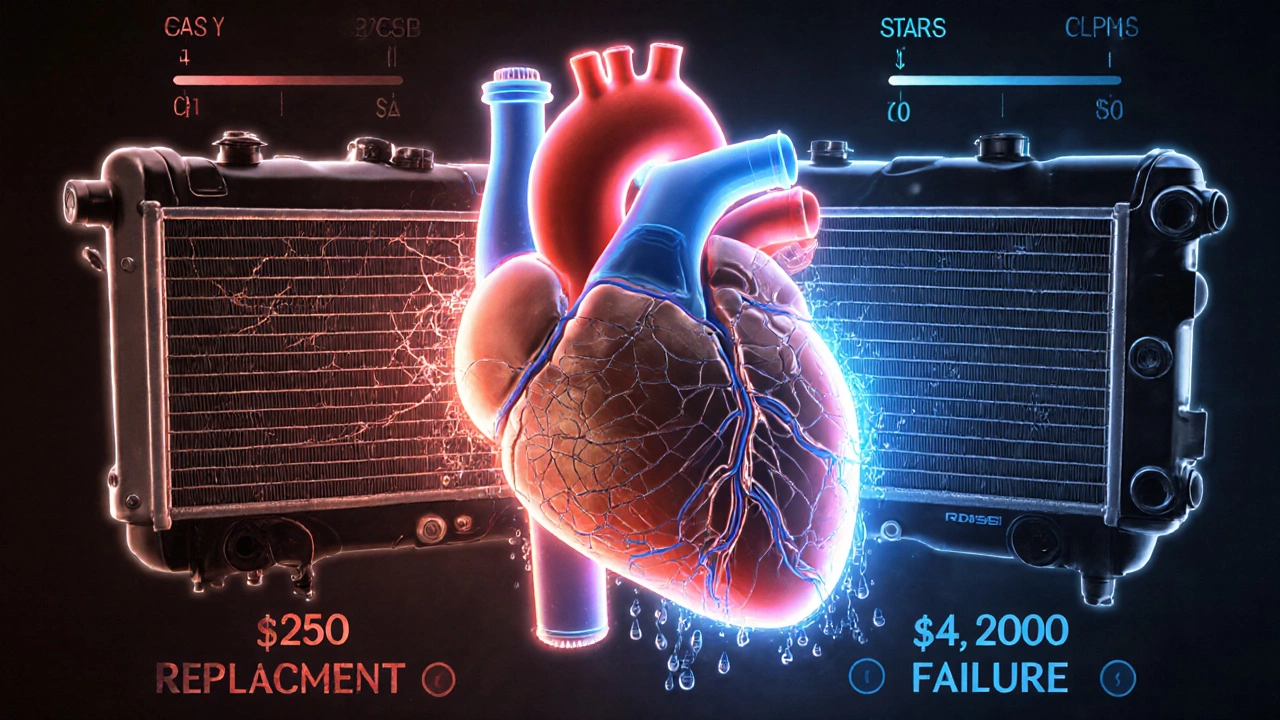
Pro Tips to Extend Radiator Life
Once you’ve fixed or replaced your radiator, don’t let it fail again. Here’s what actually works:
- Change coolant every 30,000-50,000 miles. Even "long-life" coolant breaks down over time.
- Use distilled water, not tap water. Tap water has minerals that cause scale buildup.
- Check the radiator cap pressure rating. A weak cap lets coolant boil at lower temps.
- Inspect hoses every oil change. A swollen or cracked hose can cause pressure spikes that crack the radiator.
- Keep the front grille clean. Bugs, leaves, and dirt block airflow and make the radiator work harder.
These steps cut radiator failures by 60% in cars over 10 years old, according to data from the National Institute for Automotive Service Excellence (ASE).
What Happens If You Ignore a Leaking Radiator?
Ignoring a small leak sounds harmless. But coolant loss leads to overheating. Overheating leads to warped cylinder heads. Warped heads lead to blown head gaskets. And a blown head gasket? That’s a $2,000-$4,000 repair.
One driver in Texas ignored a slow leak for three months. His car overheated on the highway, seized the engine, and took out the timing chain. The fix cost $4,200. The radiator leak? It would’ve cost $25 to seal.
Don’t wait for the engine to scream. Check your coolant level weekly. If it’s dropping, find the leak before it finds your engine.
Can I use radiator stop leak products permanently?
Stop leak products are meant for temporary fixes. They work by forming a seal inside the cooling system, but they can clog narrow passages over time. If you use them, plan to flush the system and repair or replace the radiator within 6-12 months. Don’t treat them as a lifelong solution.
Is it safe to drive with a leaking radiator?
Only for a very short distance if you’re close to a shop. Driving with low coolant causes overheating, which can warp engine parts or crack the block. If you see steam or the temperature gauge hits red, pull over immediately. Even 10 minutes of overheating can cause permanent damage.
Can a radiator be patched with solder?
Only if it’s made of copper or brass. Most modern radiators are aluminum with plastic tanks. Solder won’t stick to aluminum without special equipment, and it’s not safe to heat aluminum radiators with a torch-you risk melting the plastic end tanks. Use epoxy or sealant instead.
How do I know if my radiator is clogged and not just low on coolant?
If the coolant level is full but the engine still overheats, and the heater blows cold air, the radiator is likely clogged. You can also feel the radiator fins-top should be hot, bottom should be warm. If the bottom is cold while the top is boiling, coolant isn’t flowing. A flush usually fixes this.
What’s the best radiator sealant for aluminum radiators?
Bar’s Leaks Liquid Copper is the most trusted for aluminum. It contains real copper particles that bond to metal surfaces and seal leaks without clogging the system. Avoid generic brands that claim to work on all materials-they often contain fillers that plug small passages and reduce cooling efficiency.
Next Steps: What to Do Now
If your radiator is leaking or overheating:
- Check the coolant level and top off if low.
- Look for visible leaks under the car or around the radiator.
- If it’s a small leak, try a sealant first-it’s cheap and fast.
- If the engine runs hot even with full coolant, do a flush.
- If neither works, get a professional inspection. They can pressure-test the radiator and find hidden leaks.
Most radiator problems don’t need replacement. Fixing it yourself saves money, time, and stress. Just don’t wait too long-coolant leaks don’t get better with time. They get worse.
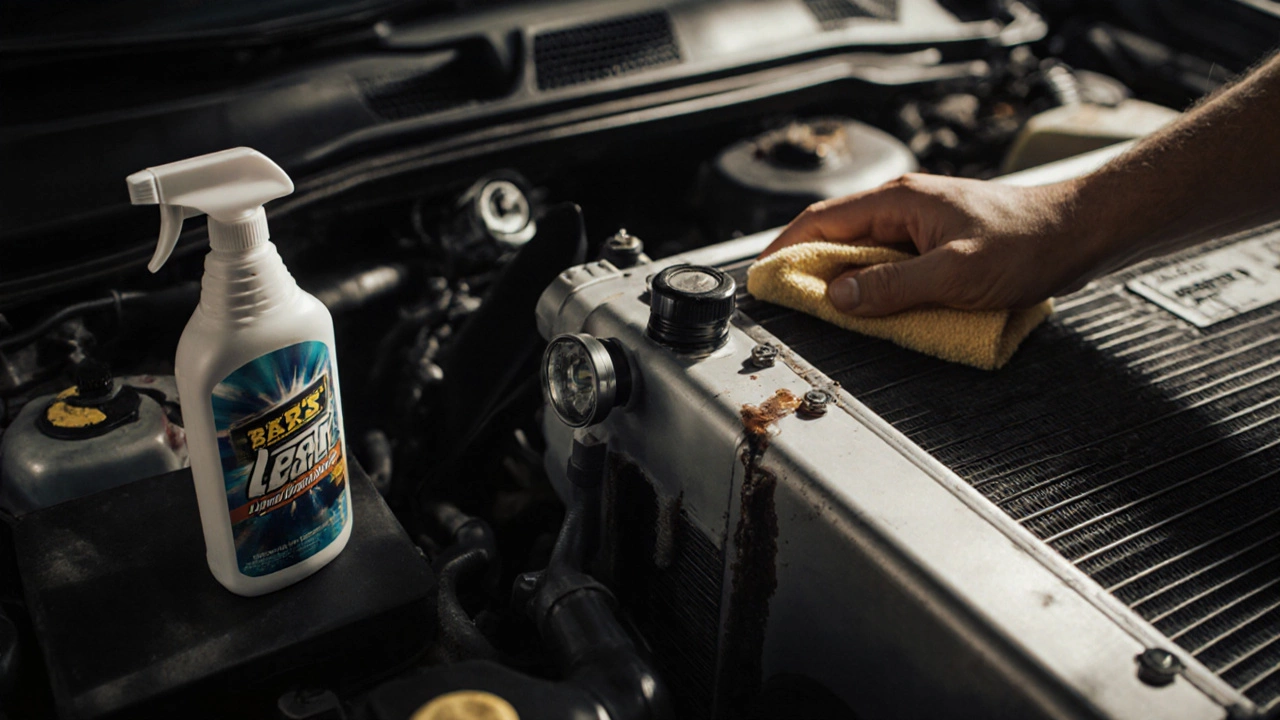


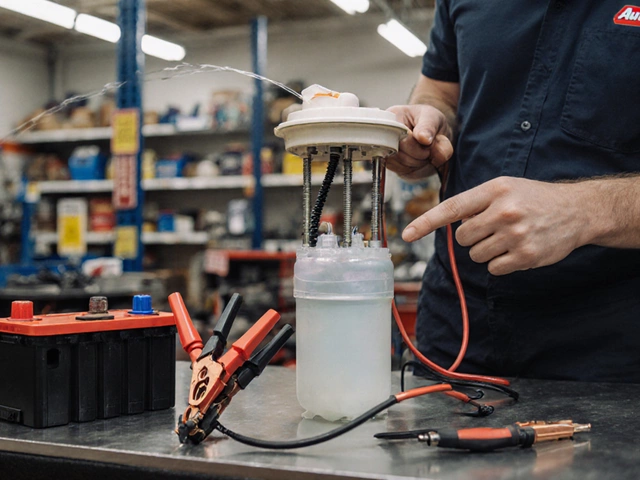

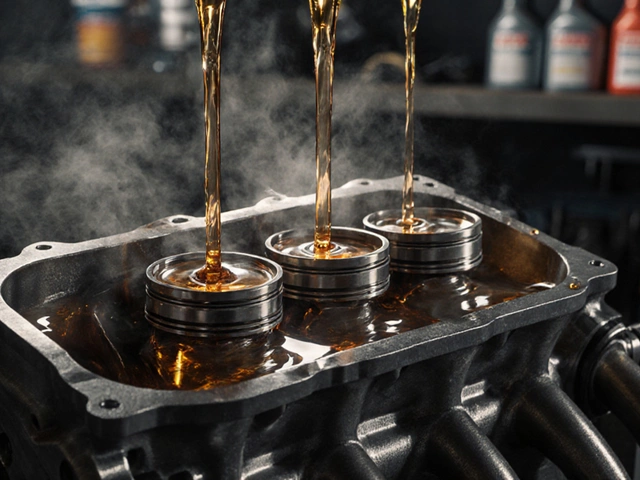



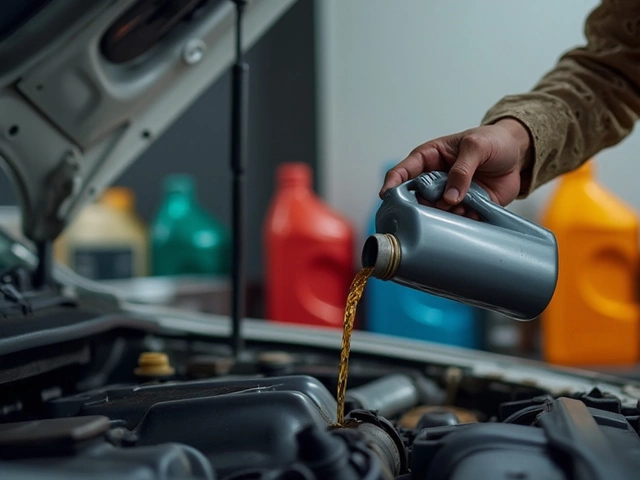

Write a comment